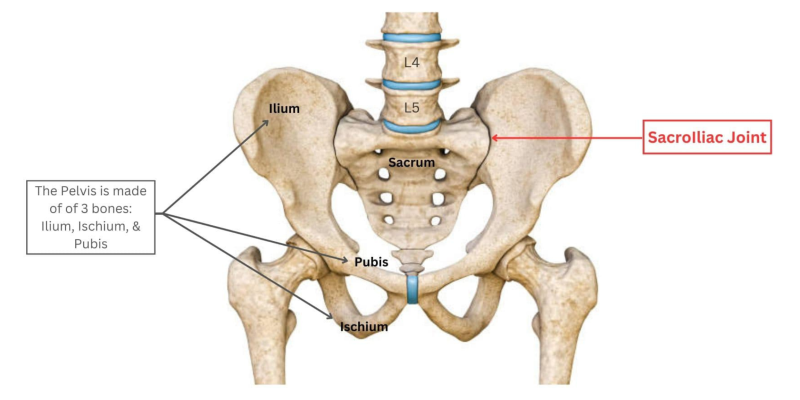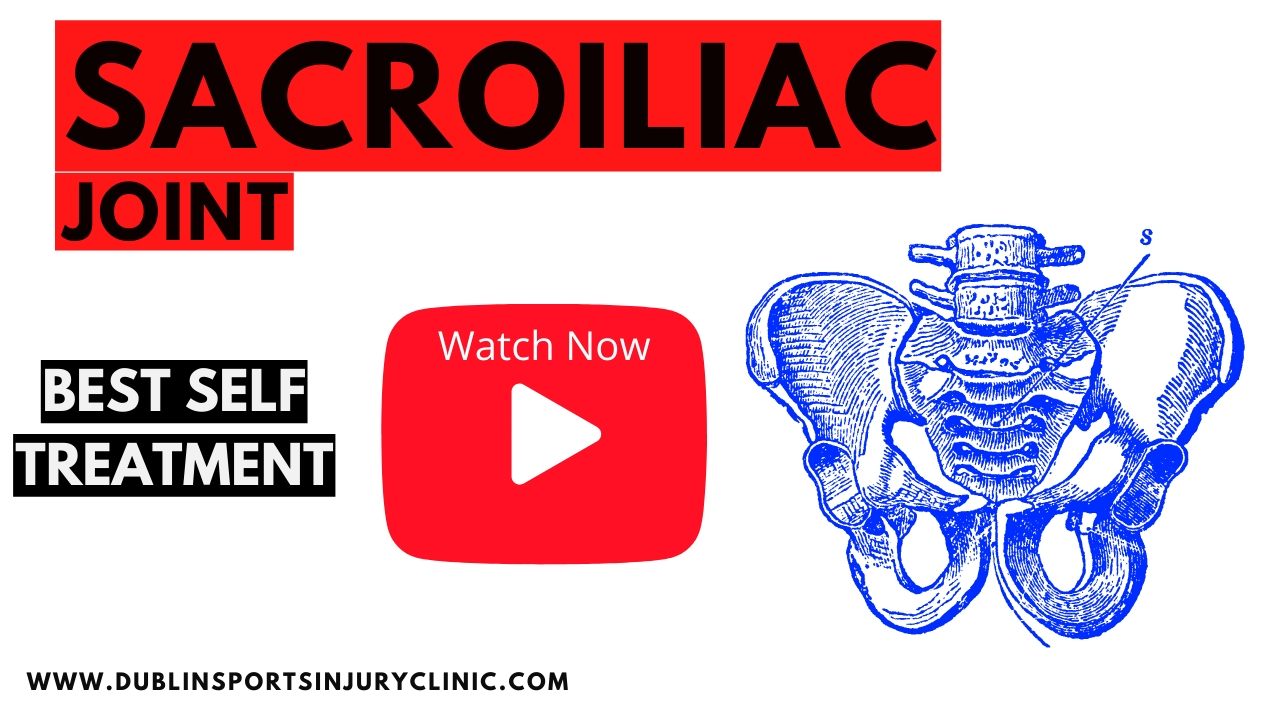Sacroiliac joint syndrome (SIJS) pain arising from the SIJ joint structures and felt over the sacral sulcus and in the region of the posterior iliac spine, often referring to the groin, buttocks, and posterior thigh and less often to the lower limb (Read More). On the other hand, it is believed that SIJ dysfunction generally refers to an aberrant position or movement of SIJ structures that may or may not result in pain.
SIJ and back pain
The relationship between the sacroiliac joint (SIJ) and low back pain has been a subject of debate with some studies regarding SIJ pain as a major contributor to the low back pain problem (Read more). In contrast, other studies highlighted SIJ as an unimportant or irrelevant factor in back pain (Read more).
Sign and symptoms
One of the most challenging aspects of diagnosing and treating SIJ dysfunction lies in its inconsistent presentation. SIJ pain can present through localized and/or referred pain. “The most common complaints include pain in the lower back, buttocks, leg, groin, and hip” (Read more).
SIJ Diagnostic test:
The diagnosis of sacroiliac joint pain is quite difficult as there are many other causes of pain around the hip and lower back. In clinical practice, patient’s history will be taken through the initial assessment and one of the most common tests includes Patrick’s test, which identifies SIJ pain during flexion, abduction, and external rotation, and Gaenslen’s test, which applies for hip extension and aggravates the SIJ will be used for diagnostic test (Read more).
However, many studies highlighted (Read more) the lack of reliability and validity of the SIJ diagnosis test that we have been using in clinical practice (Read more). In addition, “it must be emphasized that neither history nor physical examination findings are capable of producing reliable results” (Read more).
On the other hand, another study in 2018 concludes the “Shimpi Prone SIJ test” as an extremely useful non-invasive clinical tool with having good reliability with a substantial rater agreement and having a good validity and accuracy for the assessment of the SIJ in patients with SIJ movement dysfunction (Read more).
What about diagnostic guided injection?
A diagnostic SI joint injection is a procedure to confirm that pathologic changes (i.e. arthritis) and inflammation within the SI joint is the underlying cause of your pain. If this injection works, it will relieve pain for several hours. After that, the pain is expected to return to normal. However, the results of the systematic review highlighted, “it is unclear whether image-guided intra-articular diagnostic injections of local anesthetic predict positive responses to therapeutic agents”. In addition, they have studied not only the diagnostic injection but also the therapeutic effects on patients and they have concluded, “The overall quality of evidence is moderate for the effectiveness of therapeutic SIJ injections” (Read more).
How much SIJ could move in manipulation?
Many of my patients who have been told that their SI joint is out of place or it’s twisted, or it’s out of alignment, expecting that the therapeutic manipulation can fix their issue and put back their SI join in the right alignment.
The question is does SI joint really moves with manipulation?
Sacroiliac joints are true synovial joints and thus subject to various forms of arthritis and degenerative processes. Although they are relatively immobile, the joint can only rotate 3–5° in ONLY younger subjects. After the fifth decade of life, fibrosis takes place between the cartilage surfaces and by the seventh decade, the joint has usually undergone fibrous ankylosis. The available range of movement decreases as fibrous ankylosis increases.
On the other side, the review of seven studies of the sacroiliac joint movement found that it is “limited to minute amounts of rotation and of translation.” Specifically, there’s a maximum of about 8° rotation and 8mm translation, which might sound like more than a “minute” amount, but those are very specific maximums. The “average” motion would be much less, just a couple of degrees and millimeters in most cases. According to this data, it’s probably difficult and unreliable for therapists to determine SIJ movement and position by feel (Read More).
That means as a physical therapist, unfortunately, we can’t palpate the position of SIJ correctly and manipulate or adjust the SIJ joint due to the nature of the joint. That leaves us with 1st and most non-invasive intervention which would be the home-based exercise rehabilitation that we provide our patients for recovery.
Conservative Treatment
Physical Therapy
The initial step in the acute phase of SIJ pain (1–3 days), relative rest, following the POLICE and AVOID HARM protocols, and avoidance of aggravating factors of pain is recommended. Activities that involve a one-leg stance such as skating and running may increase the force in each SIJ and intensify the pain. Once the recovery phase (3 days to 8 weeks) is reached, we advise our patients to maximize function with therapeutic exercises and physical therapy.
The treatments include stretching (not for pregnant patients), strengthening, stabilizing pelvic floor muscles, correcting gait abnormalities, and addressing postural and dynamic muscle imbalance. In pregnant patients with hypermobility and laxity of the SIJ, excessive stretching and mobilization may aggravate SIJ pain.
Home-based Exercise Rehabilitation:
Here is an example of how to start your rehabilitation exercise program at home. The goals of these exercises are to improve mobility and stability of SIJ, strengthening the muscle around the SIJ (Glutes Maximus), strengthening the pelvic floor, and correcting any asymmetries and hyperactivity of muscle groups with muscle energy technique (MET).
Our Approach
Dublin Sports Injury Clinic is a Physical Therapy Clinic based in Pearse Street, Dublin 2. We have a high volume of patients who are treated with low back pain. Initially, our treatment will be focusing on helping our patients to get pain free as quickly as possible. We educate our patients to understand the cause of their back pain and how they can stay pain-free. Our treatment and rehabilitation exercises will be customized for every patient and we show them the correct techniques and progression.
Next step
Want to get in touch with our team of a therapist or you are looking for some advice? Simply fill in your details below & we get in touch with you shortly.
FOLLOW US ON YOUTUBE AND GET ACCESS TO OUR WEEKLY FREE REHABILITATION EXERCISES.

Disclaimer: This article is for information only and should not be used for the diagnosis or treatment of medical conditions. You can contact us if you would like to book an appointment or get some advice from our therapist.

